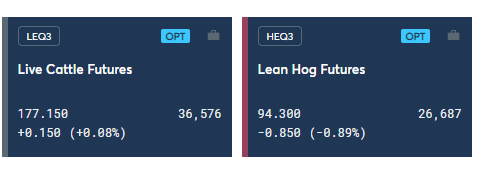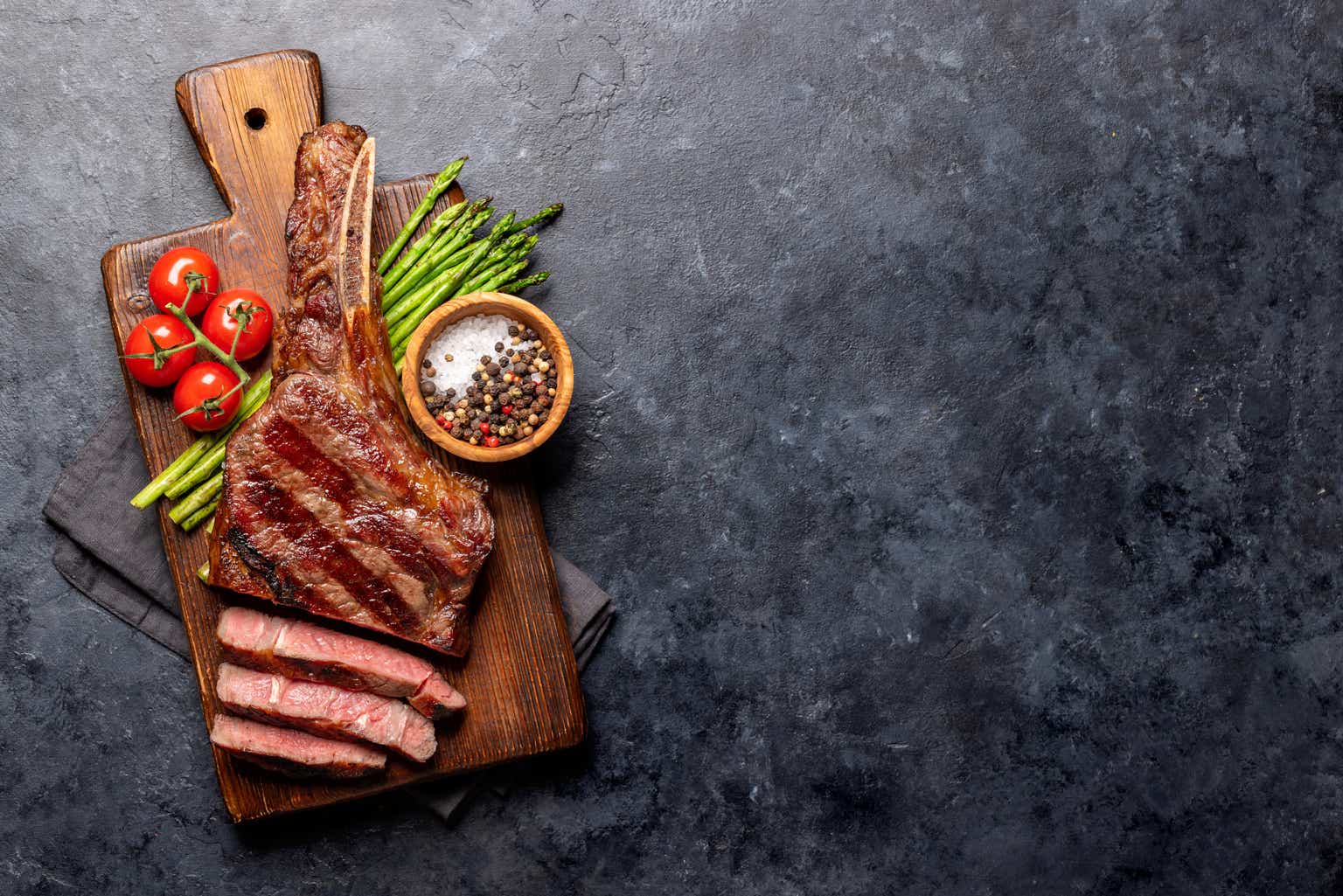By Debbie Carlson
At a glance
- Secondary beef cuts like flank steak and skirt steak are growing in popularity as the price of beef increases.
- Tighter supplies, inflation and weather will remain the key factors for cattle markets.
Higher beef prices are unlikely to deter Americans from grilling this summer.
Meat demand is expected to stay strong as summer kicks in, with beef likely to retain its crown as king of the grill. However, meat-eaters are likely to choose secondary cuts such as brisket, skirt, hanger and flank steaks for their everyday protein, and save pricier middle meats such as filets and porterhouses for special occasions.
Michael Uetz, principal, Midan Marketing, a meat-industry advertising, marketing and research firm says generally meat prices rose over the past few years because of tight animal supplies and inflation; still, demand for all proteins continues to be “incredibly strong.”
“Summer is the time for grilling, and consumers are getting very excited about getting out and putting some type of meat on the grill. Beef tends to lead the crowd there,” Uetz says.
Food prices are expected to grow more slowly in 2023 versus last year, according to the Consumer Price Index, with the all-food-price category expected to rise 6.2% in 2023.
Firing Up the Home Grill
Uetz says the pandemic gave people time to learn how to cook different cuts of meat at home which has allowed them to experiment with less-expensive cuts.
Uetz expects solid meat demand this summer. Midan’s research shows brisket sales are up 18% year-over-year, flank steaks are up 7.6%, and skirt steaks are up almost 11%. “We are seeing consumers expand their repertoire and look beyond the traditional middle meats even for grilling season,” he says.
Price is still the No. 1 driver for consumer decisions, but eaters are looking for other information to help guide purchases. According to Midan’s beef attributes study, 43% said a U.S.-produced beef product is a top quality indicator, with 37% saying a grass-fed label indicates quality, while 30% look for humanely raised messaging or a U.S. Department of Agriculture organic label.
“They’re starting to try to educate themselves and use those factors to make choices beyond price,” he says.
Grass-fed is still a niche category. Domestic supplies are growing, but much of it comes from Australia, New Zealand or South America. Those who purchase it see it as a healthy product, he says, although price is still an issue.
Restaurants Face Menu Challenges
Inflation and tight animal supply put restaurants in a tricky position of balancing how to create enticing menus that consumers want and can afford while still making a profit.
While popular middle meat cuts such as filets and porterhouses are menu staples, prices are high for these top end cuts. Chefs are taking creative approaches and offering different options, including the “Denver steak,” which comes from the chuck under blade.
Tiffany Sawyer, director of culinary and beverage for hotel operator First Hospitality’s luxury/lifestyle brands, which has about 30 hotels and multiple operations within each, is informing chefs of options such as the “baseball cut” for steaks. It comes from the top sirloin and is cut to resemble a filet. It’s not as texturally soft, but it is less expensive and has a little more fat to it.
“It’s not a filet, but it’s super fun,” she says.
Some of First Hospitality’s chefs have also taught servers to take an entrée such as the Tomahawk steak, a 72-ounce ribeye steak with a frenched bone that’s about five inches long, and suggest it as a shared appetizer for tables of four people or more. It allows more guests to experience the great cut of meat and to show the versatility of the particular cut, she explains.

Prime or Choice?
Sawyer says the hotel and retail trade still struggles from the impacts of Covid shutdowns. Prime beef is still a hallmark of steakhouses, but it will be pricier, which is why more restaurants are offering choice beef. Plus people may be purchasing prime beef at places like Costco or Sam’s Club to cook at home, using skills they learned in the pandemic.
People who are going out to eat are looking for meals they’re not going to make at home, which is why higher-end items still sell, but she’s also making sure chefs have affordable items on menus.
“We have to educate those guests a little bit about the secondary pieces of meat that they may not have had a lot of experience with,” she says.
And there’s interest in grass-fed beef, even at a higher price point, she says. Servers also explain the differences between grass-fed and grain-finished beef for guests interested in trying it.
Trading Activity Strong; Mixed Outlook For Livestock Prices
Strong meat demand underscores increased trading activity in livestock products this year. As of June 30 year-to-date, average daily volume for feeder cattle futures is up 32% while live cattle futures saw a 10% increase.
Makenzie Billings, Manager of Livestock Products at CME Group, says supply chain issues related to COVID and then droughts in cattle country caused ranchers to pull back on breeding.
It takes roughly a minimum of 15-16 months (ideally, 30-32 months) to raise cattle from birth to finishing, so it may be about two years before supplies normalize.
She notes beef supplies may become increasingly tighter as the industry begins retaining heifers for breeding, which means feedlot placements could eventually decline.
These factors have contributed to rising volatility in live cattle futures markets, according to the CME Group Volatility Index (CVOL), as well as increased trading in cattle options. Average daily volume in Feeder Cattle options up 67% and Live Cattle options is up 34% year-to-date.
Beef eaters are unlikely to get much relief at the meat case, as live cattle futures values have been in a steady uptrend since mid-2022, with front-month futures prices up more than 20% through June 30.
In June, 50% of respondents to the Purdue University/CME Group Ag Barometer said they expect “good times” for livestock producers in the next five years, up from 37% in May. Optimism about positive returns for cattle producers, especially cow-calf operations, drove the positive outlook.
Sterling Smith, director of research at AgriSompo, concurs that beef prices will stay elevated, and also points out that feed prices remain elevated relative to historical levels.
Feeder cattle values also suggest beef prices will remain stout, as feeder cattle future prices are up 25% year over year through June 30.
“We are most likely in a sustained bull market for cattle as long as the consumer is willing to pay up,” he says.
Smith says summer’s weather forecast is important to watch as parts of the Western U.S. are already dry, noting a drought stretches from Texas through Nebraska and into South Dakota. “This makes it hard for the grass-fed beef in Texas. You don’t have the grass, so that naturally tightens the supply,” he says.
Original Post
Editor’s Note: The summary bullets for this article were chosen by Seeking Alpha editors.
Read the full article here












